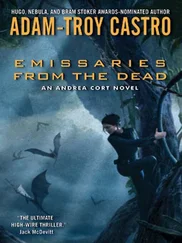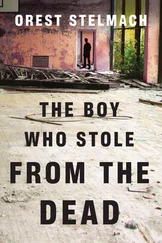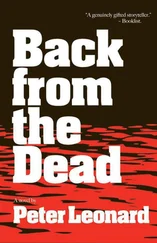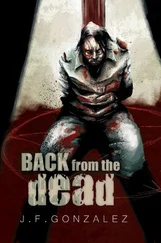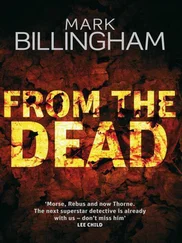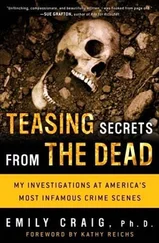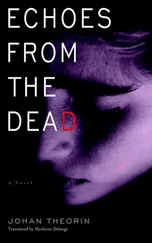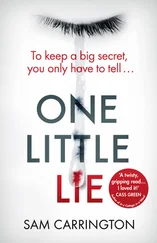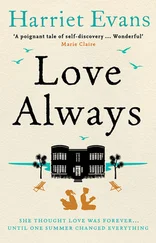So I turned to one of my colleagues at the clinic for help. By now, people at work knew all about my “secret life,” and they had all been very supportive, even to the point of letting me videotape their faces to create the computerized file of features I used in my clay facial-reconstruction experiments. But when I tried to use these same cutout facial features on Baby Lollipops, I ran into a few unexpected problems. First, my fledgling technique had been designed for use with straight-on photos, whereas the crime scene photos of the battered child had been taken at an angle. And, of course, there were no infant faces in the computer “library” I had created. I asked one of my friends to let me digitize her child's face, and when I sat the little boy down in my studio, I turned the camera ever so slightly, trying to match the angle of the little boy in the autopsy photograph. Back at the computer, I left the image of the T-shirt and the child's shoulders just as they were, but I inserted these new eyes into the face I had restored. I only needed the eyes, because with the computer I had already smoothed over the bruised and decomposed features of Baby Lollipops's face.
Finally, instead of letting the image look like a photograph of a real dead child with a new nose, eyes, and lips, I blended and airbrushed the entire face and head so that it all looked like a drawing of a live little boy. His eyes were open, his lips were closed, and I purposely arched the eyebrows just the tiniest bit to make it appear as if the boy were puzzled-or pleading.
The visual effect was powerful, and when the coroner and detectives released their autopsy information, the poignantly illustrated story made the front page of most major newspapers in Florida, as well as the TV show America 's Most Wanted. Although there would normally be a stigma associated with releasing a photograph of a dead infant to the media, the fact that my image looked so alive enabled both police and press to use the picture with a clear conscience.
Although I was anguished over the case of this battered child, I confess I also felt a kind of exhilaration. For the first time in my life, I was a real member of the forensic team. Before I'd always been “Brian's girlfriend” or “that artist from the clinic,” and the law enforcement personnel treated me with the kind of politeness reserved for outsiders. This time I was a member of the team, first and foremost, and my colleagues on the force weren't afraid to show me their desperation, to share their hopes, fears, and frustration. Nor were they intimidated by the fact that I happened to have a skill that they lacked. Unlike a few of the doctors I'd been working with for the past fifteen years, these guys were far too confident of their own abilities to even think of being threatened by mine.
Then there was the elation of knowing that I'd helped with a case that cried out for justice. Soon after my picture of Baby Lollipops was published, the police were deluged with calls, and by early December they found and arrested the child's mother, Ana Maria Cardona, and her lover, Olivia Gonzalez. A suspicious babysitter had come forward on her own, the day before my picture had even reached the airwaves. She was initially able to tentatively identify Baby Lollipops as Lazaro Figueroa from his description-but she wasn't absolutely certain until she saw my picture.
That picture galvanized both her resolve and the community as a whole. Lazaro had essentially been invisible throughout his short, miserable life. Testimony at trial confirmed that he had spent most of his days tied to a post inside a closet. There were no pictures of him anywhere in existence. But once he had a face, the investigation really came alive. People who knew about Lazaro were finally willing to cooperate with detectives, feeding them the information that enabled them to locate and arrest his mother.
My picture had energized both the cops and the community. And as investigators looked for information about Lazaro's life, they also uncovered several new cases of child abuse. Apparently, people saw the picture and started calling to check on all the other little kids they knew. They also forced friends, family, and welfare officials to check on potentially at-risk children.
Eventually, Gonzalez cut a deal and agreed to testify in exchange for a sentence that would spare her life. At Lazaro's mother's trial, Gonzalez's gripping testimony revealed that the boy had been beaten repeatedly with broomsticks, belts, and finally with a baseball bat. Testimony also revealed that the boy's mother would also intentionally poke his eyes, break dinner plates over his head, and smear his face with his own feces. As a result of Gonzalez's testimony, Ana Maria Cardona was found guilty and eventually sentenced to death in Florida 's electric chair (although the verdict was vacated in July 2002).
The case of Baby Lollipops changed my life. For the first time, I had gotten personally involved with a gripping, heart-wrenching case. For the first time, I was on the inside. And when the whole investigation came together and they got a conviction, what a rush! I had never felt anything like it in my life.
So as the Baby Lollipops case concluded, my soul-searching did, too. I applied for one of the few grad-student slots at the University of Tennessee at Knoxville. In December, I gave my six months' notice to the clinic. In May, I packed my bags and left.
“Remember,” said Dr. Hughston as I started to pull out of his driveway on my way to Knoxville, “you can always come back.” He reached in through the window and put that big loving hand on my shoulder, giving it a little shake, just to let me know he meant what he said. Whatever the future held, I knew I was on my way and that I had my mentor's approval. I waved goodbye to Dr. Hughston and Columbus, and headed off to the Body Farm.
In nature nothing dies. From each sad remnant of decay,
some forms of life arise…
– CHARLES MACKAY
THE FIRST THING I noticed was the smell-a sweet, almost musty odor, such a subtle part of the light spring breeze ruffling our hair that I couldn't quite tell where it came from.
I was following closely in the footsteps of Murray Marks, the guide on my first trip to the infamous Body Farm. This was always the first rite of passage for any grad student in the forensic anthropology program-a trip out to the small field and hardwood forest behind the University of Tennessee Medical Center in Knoxville.
Suddenly, Murray stopped and nodded toward the ground at my feet. Murray was tall and handsome, with dark-brown hair and soulful brown eyes, and I was happy to follow his gaze, but I could see only a black stain hidden in the tall grass. No, wait, there was more. If I looked closely at the mucky matrix of soil, dead foliage, and thousands of small brown pellets, I could see something else-the barely discernable bones of a human forearm.
I did everything I could to keep my face composed, though I'm sure I didn't fool Murray for a second. This skeleton was different from any I had seen in my medical career. The bones seemed to have soaked up the wetness and color of the soil, with bits of dark gray-brown sinew clinging to their ends in a futile attempt to hold them together at the joints. Where the larger joints had not yet come apart it looked as though someone had frozen a Halloween skeleton marionette in the middle of a wild dance: the legs splayed at the knees, one foot turned in as the other stuck straight up with curled toes, one arm folded awkwardly behind the neck while the other reached for something far off in the grass. The skull was there, but it appeared to be on backwards-the face was hidden in the dirt, while the jawbone rested at a strange angle within the chest cavity.
Читать дальше

